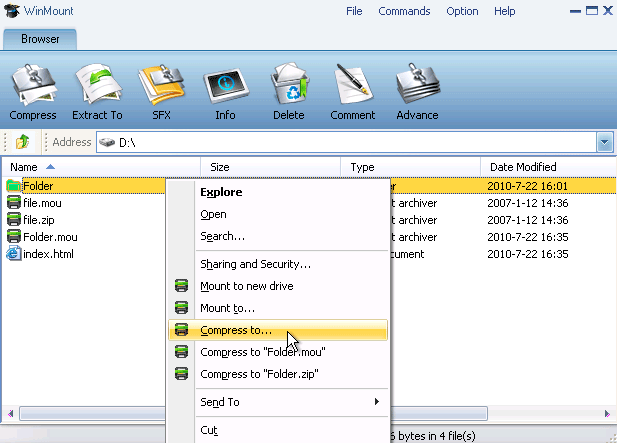

Command Prompt does let you copy and paste from it so you can paste the output into a text file, or just use > followed by the name of a text file to save the output to. Navigate to File Explorer on the taskbar > Select all files youd like to add to your zip folder > Right click and select Send to > Select. The list of files you get is probably going to be a long one.

To view nested compressed items as well as those at the root of the current folder, run the following command compact /s Look through the list of files and folders that Command Prompt outputs and all the items with a C before their name are compressed items. Once you’re in the folder, run the following command to get all the compressed items at the root of that folder compact

Open Command Prompt and use the cd command to move to the folder that you’d like to scan for compressed files and folders. You can use a modifier to find the nested compressed items as well. If the folder you’re scanning has a compressed folder which in turn has other compressed items nested under it, this scan will only list the parent folder that’s compressed. When you scan a folder, it will list the compressed items at its root and not nested items. I suspect now that it could be related to the order in which I create the package.You can scan entire folders for compressed files and folders. The only thing mentioned was that filure to read the package can happen if there is an md5 error. My question is: Is there something I might have missed?Įdit: Client gave me little additional Feedback. inspecting the contents of the created zip file everything looks right yet the recipient application fails to read it. After zip creation I insert my created xml file. The folder APPPACKAGE contains some required files. Using (StreamWriter sw = new StreamWriter(zae.Open(), new UTF8Encoding(true))) ZipArchiveEntry zae = archive.CreateEntry(PACKAGEFILENAME) Using (ZipArchive archive = new ZipArchive(fs, ZipArchiveMode.Update)) Using (FileStream fs = new FileStream(ZIPPATH, FileMode.Open)) ZipFile.CreateFromDirectory(APPPACKAGE, ZIPPATH) However, you can also scan to find and list compressed files and folders. NTFS compressed files and folders will have double blue arrows overlay on their icon at the top right corner to indicate that they are compressed. If (File.Exists(ZIPPATH)) File.Delete(ZIPPATH) Files or folders saved into an existing compressed folder will automatically be compressed. If (!Directory.Exists(PACKAGEPATH)) Directory.CreateDirectory(PACKAGEPATH) This is how i create the file: using System.IO Ĭonst string ZIPPATH = string PACKAGEPATH = string APPPACKAGE = string PACKAGEFILENAME = void CreateZipArchive() Support on the other end says the application fails to read my programatically created file.

I have to send a zipped file to an external application.


 0 kommentar(er)
0 kommentar(er)
